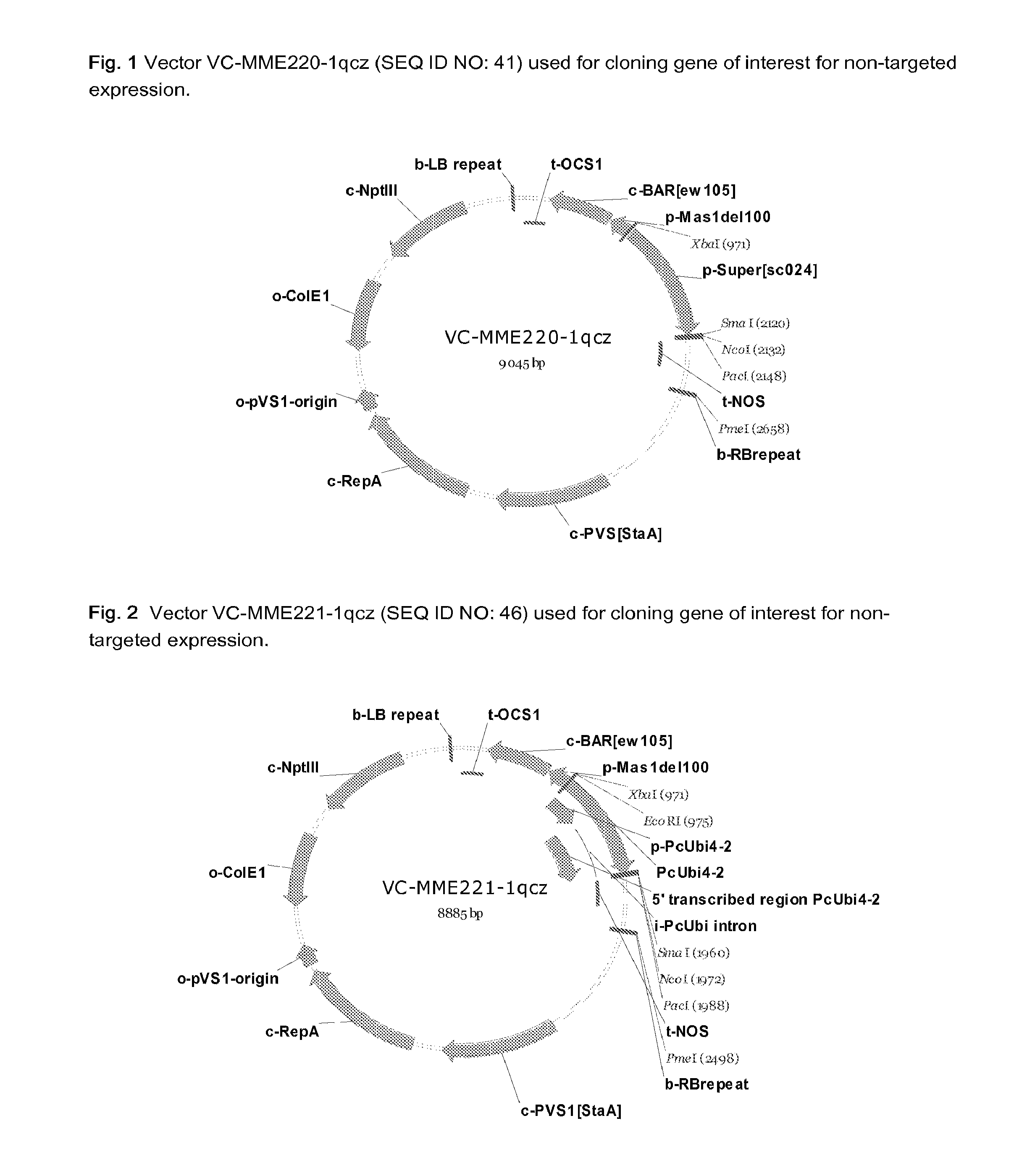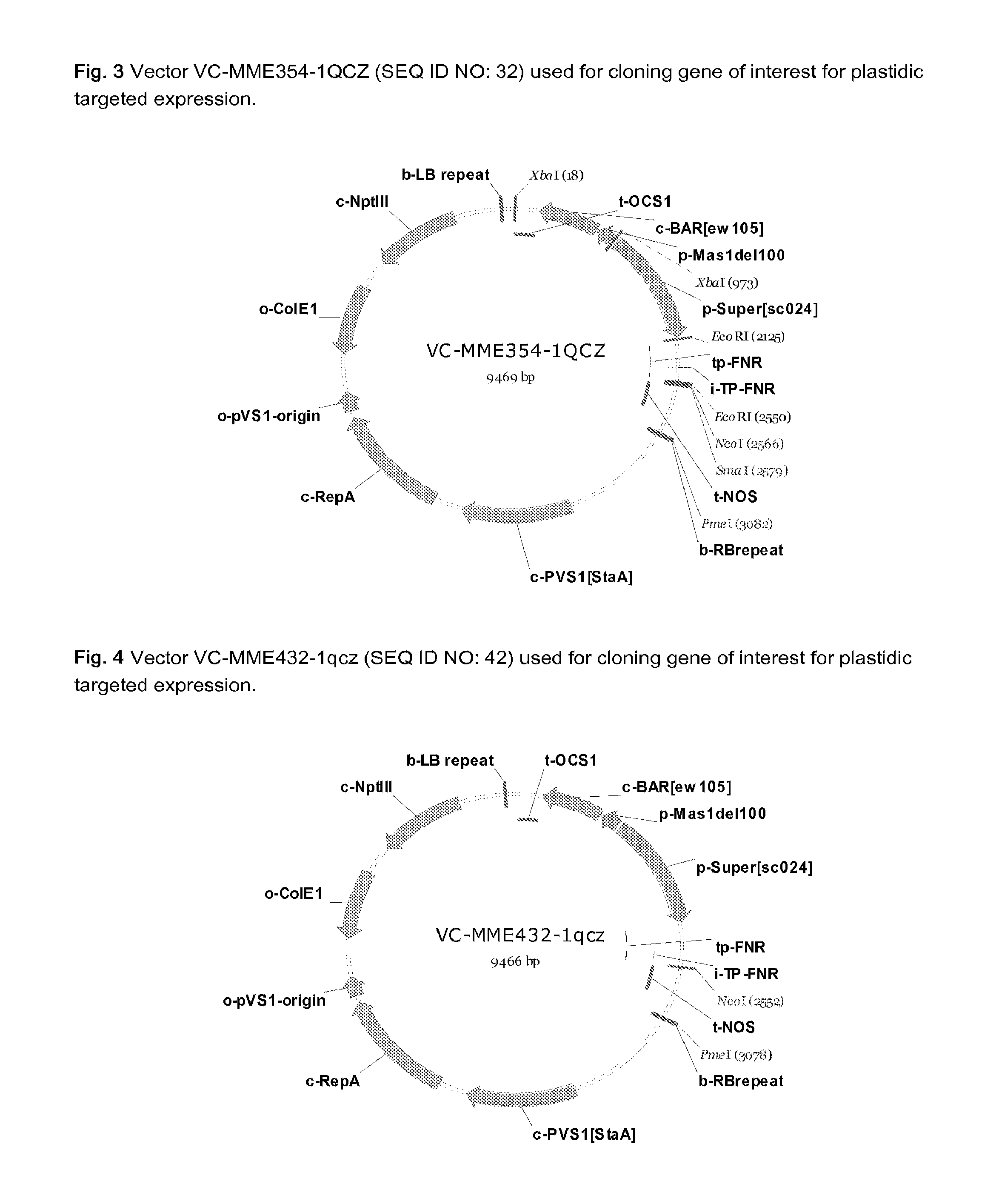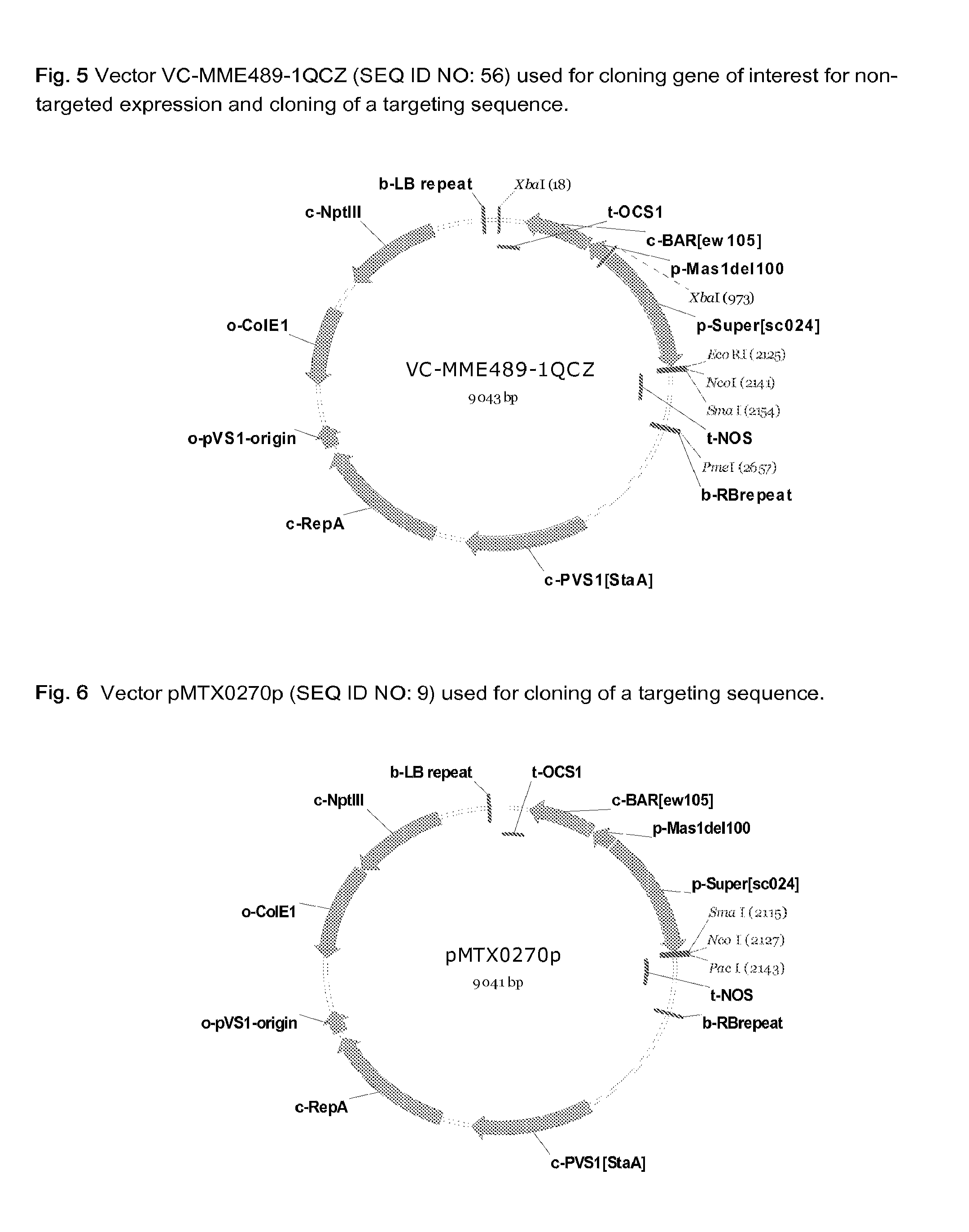Plants with Increased Yield
a technology of plant material and plant material, applied in the direction of plant/algae/fungi/lichens, depipeptides, dna/rna fragmentation, etc., can solve the problems of limited success in developing transgenic crop plants with improved yield, low yield of plant material exposed to different stresses, and limiting plant cultivation and geographical distribution
- Summary
- Abstract
- Description
- Claims
- Application Information
AI Technical Summary
Benefits of technology
Problems solved by technology
Method used
Image
Examples
specific embodiments
[0110]Accordingly, this invention provides measures and methods to produce plants with increased yield, e.g. genes conferring an increased yield-related trait, for example enhanced tolerance to abiotic environmental stress, for example an increased drought tolerance and / or low temperature tolerance and / or an increased nutrient use efficiency, intrinsic yield and / or another increased yield-related trait, upon expression or over-expression. Accordingly, the present invention provides genes derived from plants. In particular, genes from plants are described in column 5 as well as in column 7 of tables I or II.
[0111]Accordingly, the present invention provides transgenic plants showing one or more improved yield-related traits as compared to the corresponding origin or the wild type plant and methods for producing such transgenic plants with increased yield. One or more enhanced yield-related phenotypes are increased in accordance with the invention by increasing or generating one or mor...
example 1
[0789]Engineering Arabidopsis plants with an increased yield, e.g. an increased yield-related trait, for example enhanced tolerance to abiotic environmental stress, for example an increased drought tolerance and / or low temperature tolerance and / or an increased nutrient use efficiency, and / or another mentioned yield-related trait by over-expressing the genes of Table I, e.g. expressing genes of the present invention.
[0790]Cloning of the sequences of the present invention as shown in table I, column 5 and 7, for the expression in plants.
[0791]Unless otherwise specified, standard methods, for example as described in Sambrook et al., Molecular Cloning: A laboratory manual, Cold Spring Harbor 1989, Cold Spring Harbor Laboratory Press can be used.
[0792]The inventive sequences as shown in table I, column 5, were amplified by PCR as described in the protocol of the Pfu Ultra, Pfu Turbo or Herculase DNA polymerase (Stratagene). The composition for the protocol of the Pfu Ultra, Pfu Turbo or ...
example 1b
Construction of Binary Vectors for Non-Targeted Expression of Proteins.
[0809]“Non-targeted” expression in this context means, that no additional targeting sequence were added to the ORF to be expressed.
[0810]For non-targeted expression the binary vectors used for cloning were VC-MME220-1qcz SEQ ID NO 41 (FIG. 2), VC-MME221-1qcz SEQ ID NO 46 (FIG. 2) and VC-MME489-1QCZ SEQ ID NO: 56 (FIG. 5), respectively. The binary vectors used for cloning the targeting sequence were VC-MME489-1QCZ SEQ ID NO: 56 (FIG. 5), pMTX155 SEQ ID NO 31 (FIG. 7) and pMTX0270p SEQ ID NO 9 (FIG. 6), respectively. For non-targeted constitutive expression in preferentially green tissues the Big35S promoter ((Comai et al., Plant Mol Biol 15, 373-383 (1990), Kawalleck et al., Plant. Molecular Biology, 21, 673 (1993)) was used in context of the vector pMTX155. Other useful binary vectors are known to the skilled worker; an overview of binary vectors and their use can be found in Hellens R., Mullineaux P. and Klee H....
PUM
| Property | Measurement | Unit |
|---|---|---|
| temperature | aaaaa | aaaaa |
| nucleic acid | aaaaa | aaaaa |
| abiotic stress tolerance | aaaaa | aaaaa |
Abstract
Description
Claims
Application Information
 Login to View More
Login to View More - R&D
- Intellectual Property
- Life Sciences
- Materials
- Tech Scout
- Unparalleled Data Quality
- Higher Quality Content
- 60% Fewer Hallucinations
Browse by: Latest US Patents, China's latest patents, Technical Efficacy Thesaurus, Application Domain, Technology Topic, Popular Technical Reports.
© 2025 PatSnap. All rights reserved.Legal|Privacy policy|Modern Slavery Act Transparency Statement|Sitemap|About US| Contact US: help@patsnap.com



